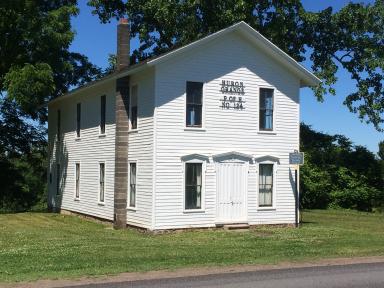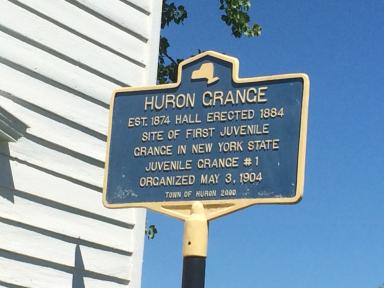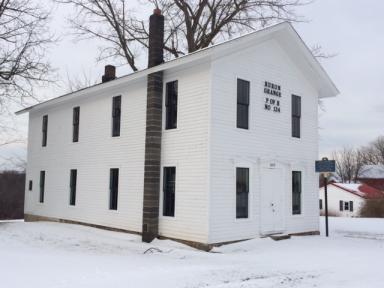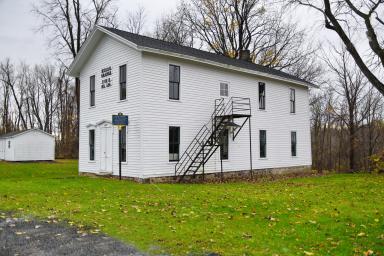If you find errors OR have additional information about this site, please send a message to contact@waynehistorians.org.
Huron Grange Patrons of Husbandry No. 124
| Historic Site #: | 04-002 (Exists) Type: B2,D9,E7,J,L | Town: | Huron | ||
| Site Name: | Huron Grange Patrons of Husbandry No. 124 | GPS Coordinates: | 43.234997, -76.884419 | ||
| Address: | 6429 North Huron Road, Huron, NY 14590 | ||||
| Description: | |||||
| An excellent example of a 19th Century Fraternal Meeting House. | |||||
 |
 |
| Huron Grange | |
 |
 |
| After 2019 Window restoration | Photo by Bob Mogray 11/18/21 |
Contact: Rosa Fox, Huron Historian Phone: 315-573-4493 eMail: rfox@townofhuron.org
Fees: free Suggested tour time: Spring-Fall
Hours of operation:please call
| Historic narrative: | |||||
The Huron Grange, Patrons of Husbandry No. 124 was chartered in 1874 when members met in schools and homes. The Grange Hall building was constructed in 1884 and remained a center of agricultural community engagement for over 75 years. In 1971, the building was sold by the New York State Grange to the Town of Huron for one dollar. The town has maintained it since. Former Huron Historian, Carol Flint was instrumental in securing and preserving the structure by clearing the grounds of brush, painting the exterior and installing a new roof. As it goes with all buildings, regular maintenance is critical to a building’s longevity. Nearly 40 years later, in 2015, in need of repair and a little tender loving care, the Huron Grange Hall was listed by the Landmark Society of Western New York on the organization’s “Five to Revive” list, which acknowledges significant historical structures worthy of restoring, preserving, and repurposing. A 2015 grant from the Landmark Society provided funds for a building site report to be completed for the structure. The site report provides the town a guideline for appropriate methods of preservation and suggested project options. The mission of the Town of Huron has been to continue moving forward with the preservation of the Grange building for a short-term benefit of more local community use and a long-term benefit of securing and stabilizing a historic building and site for future generations. | |||||
